22 Birds of Prey in Iowa
In Iowa, several species of prey species, also known as raptors, include hawks, eagles, falcons, and owls. Here are 22 examples:
1. Red-tailed Hawk (Buteo jamaicensis)
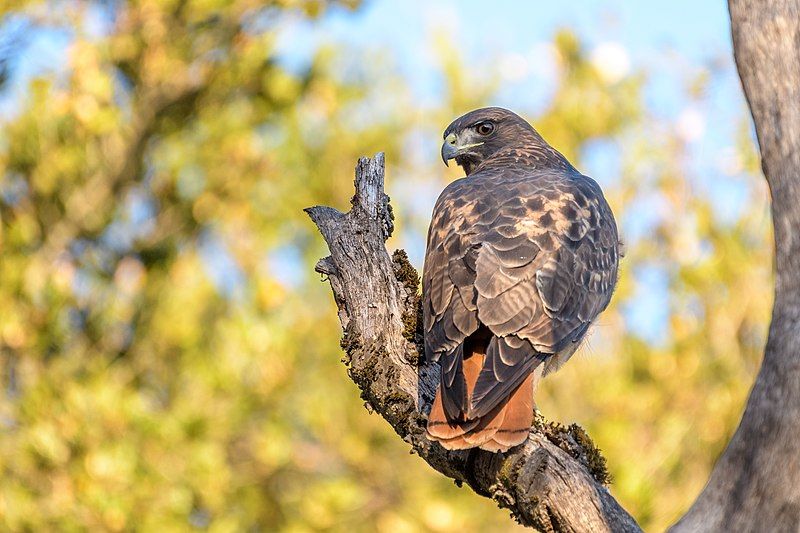
The Red-tailed Hawk, scientifically known as Buteo jamaicensis, is a bird of prey renowned for its adaptability and widespread presence across North America.
These majestic raptors exhibit a distinctive reddish-brown tail, which is most prominent in adults. They have a broad wingspan ranging from 45 to 52 inches, facilitating their mastery of soaring and gliding in the skies.
Their diet primarily consists of small mammals, birds, and reptiles. Red-tailed Hawks prefer open areas with high perches, including fields, deserts, and roadside posts, for hunting.
They are solitary creatures but pair monogamously during the breeding season. Their nests are typically built high in trees or on cliffs. The species plays a crucial role in ecosystems, controlling rodent populations.
Renowned for their piercing cry, Red-tailed Hawks symbolize wilderness and freedom in popular culture.
| Kingdom | Animalia |
| Phylum | Chordata |
| Clade | Dinosauria |
| Class | Aves |
| Order | Accipitriformes |
| Family | Accipitridae |
| Genus | Buteo |
| Species | B. jamaicensis |
2. Cooper’s Hawk (Accipiter cooperii)
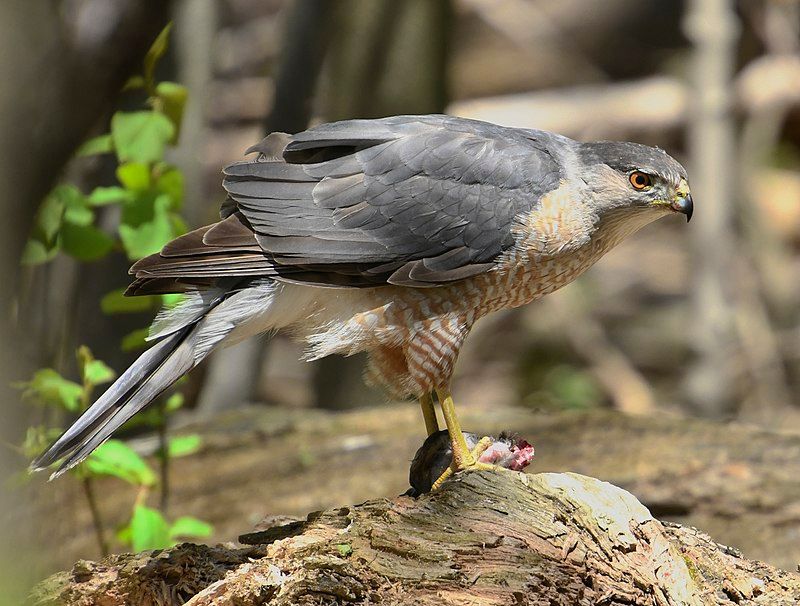
| Kingdom | Animalia |
| Phylum | Chordata |
| Class | Aves |
| Order | Accipitriformes |
| Family | Accipitridae |
| Genus | Accipiter |
| Species | A. cooperii |
3. Sharp-shinned Hawk (Accipiter striatus)
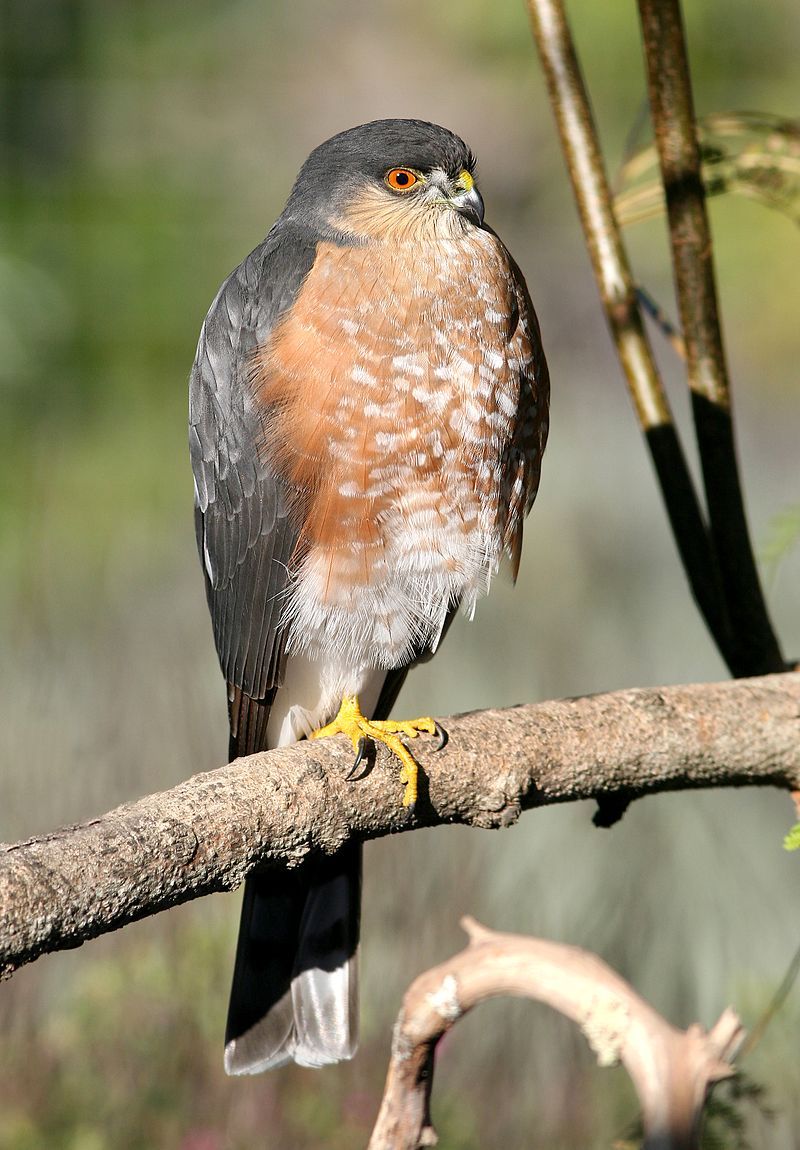
The Sharp-shinned Hawk, scientifically known as Accipiter striatus, is a small but agile raptor found in North America. It is known for its remarkable speed and dexterity while hunting.
This bird has a length ranging from 9 to 14 inches and a wingspan of 17 to 22 inches. Sharp-shinned Hawks have slate-gray plumage with distinctive red eyes.
Their diet primarily consists of small birds and occasionally small mammals, making them adept predators in wooded areas.
They are known for their secretive nature and swift hunting techniques. During breeding season, they build nests in trees and often return to the same nesting sites year after year.
These hawks play a vital role in maintaining the balance of prey populations in their ecosystems.
| Kingdom | Animalia |
| Phylum | Chordata |
| Class | Aves |
| Order | Accipitriformes |
| Family | Accipitridae |
| Genus | Accipiter |
| Species | A. striatus |
4. Red-shouldered Hawk (Buteo lineatus)
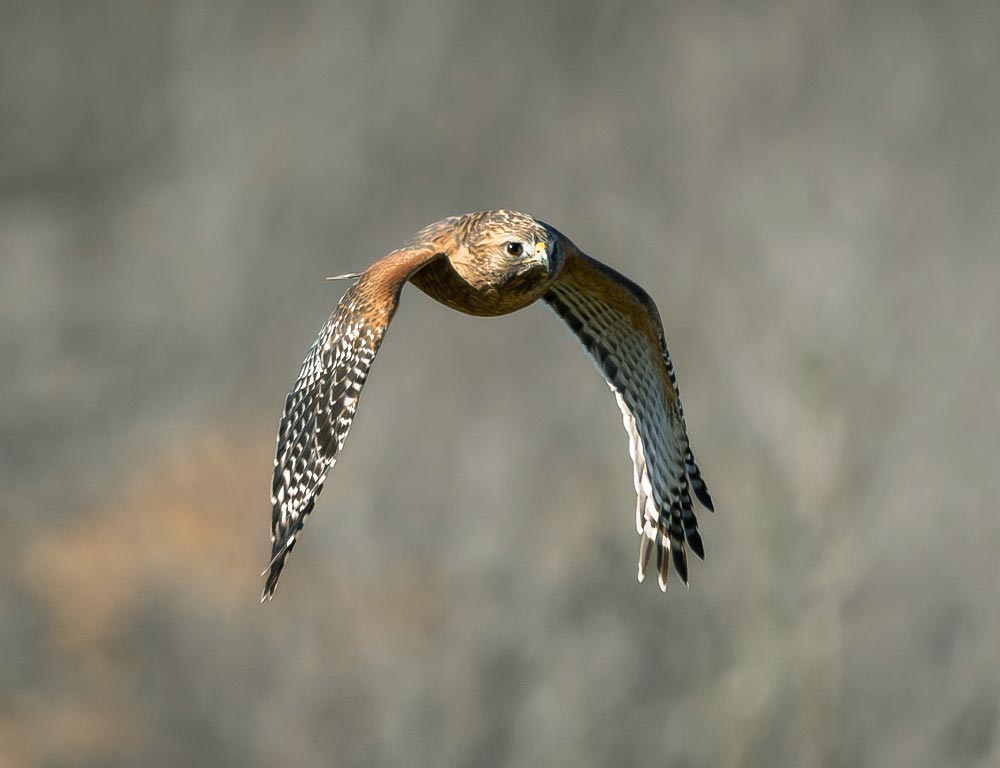
The Red-shouldered Hawk, scientifically known as Buteo lineatus, is a medium-sized raptor that inhabits wooded areas and wetlands across North America.
This hawk gets its name from the striking reddish-brown coloration on its shoulders. They are known for their soaring flights and piercing calls, with a length of 16 to 24 inches and a wingspan of 35 to 50 inches.
Red-shouldered Hawks primarily feed on small mammals, amphibians, and reptiles. They build nests high in trees and often return to the same territory year after year.
These hawks are known for their distinctive “kee-aah” call, which is often heard in their woodland habitats. They are considered indicators of healthy ecosystems and are protected under conservation efforts.
| Kingdom | Animalia |
| Phylum | Chordata |
| Class | Aves |
| Order | Accipitriformes |
| Family | Accipitridae |
| Genus | Buteo |
| Species | B. lineatus |
5. Rough-legged Buzzard (Buteo lagopus)
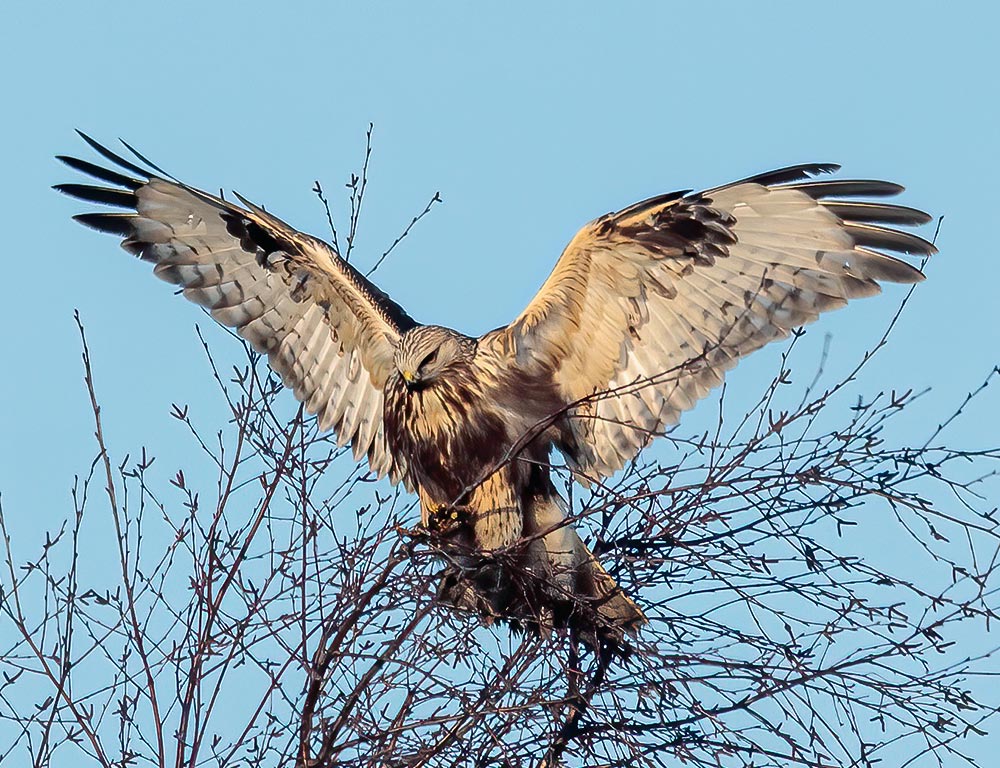
The Rough-legged Buzzard, scientifically known as Buteo lagopus, is a bird of prey that thrives in Arctic and subarctic regions across North America, Europe, and Asia. As the name suggests, they have feathered legs, which help them adapt to cold climates.
These raptors have a 51 to 57 inches wingspan and 18 to 22 inches long. Their plumage varies from light to dark, with a distinctive black belly band. Rough-legged Buzzards primarily feed on small mammals like lemmings and voles, and they are known for their keen hunting skills.
During breeding season, they nest on cliffs or in rocky areas. They are remarkable migrants traveling great distances between their breeding and wintering grounds, symbolizing resilience in harsh environments.
| Kingdom | Animalia |
| Phylum | Chordata |
| Class | Aves |
| Order | Accipitriformes |
| Family | Accipitridae |
| Genus | Buteo |
| Species | B. lagopus |
6. Broad-winged Hawk (Buteo platypterus)
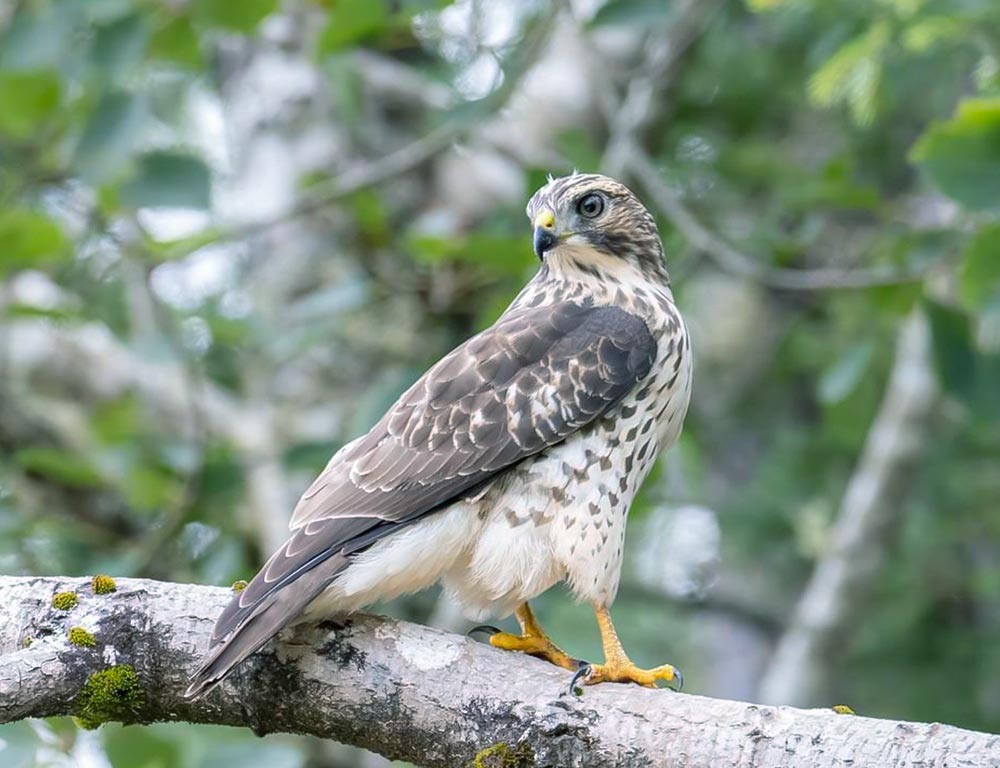
The Broad-winged Hawk, scientifically known as Buteo platypterus, is a small to medium-sized raptor found in the forests of North and Central America. These hawks have a wingspan of 32 to 39 inches and a length of 13 to 17 inches.
They are characterized by their reddish-brown plumage and distinctive white underparts with black bands. Broad-winged Hawks primarily feed on small mammals, reptiles, and amphibians.
They are known for their secretive nature and are often heard rather than seen due to their high-pitched calls. During the breeding season, they build nests in trees and exhibit monogamous pairing.
These hawks are known for their remarkable migration, with thousands of them forming kettles (spiraling groups) during their annual journey to their wintering grounds in South America.
| Kingdom | Animalia |
| Phylum | Chordata |
| Class | Aves |
| Order | Accipitriformes |
| Family | Accipitridae |
| Genus | Buteo |
| Species | B. platypterus |
7. American Kestrel (Falco sparverius)
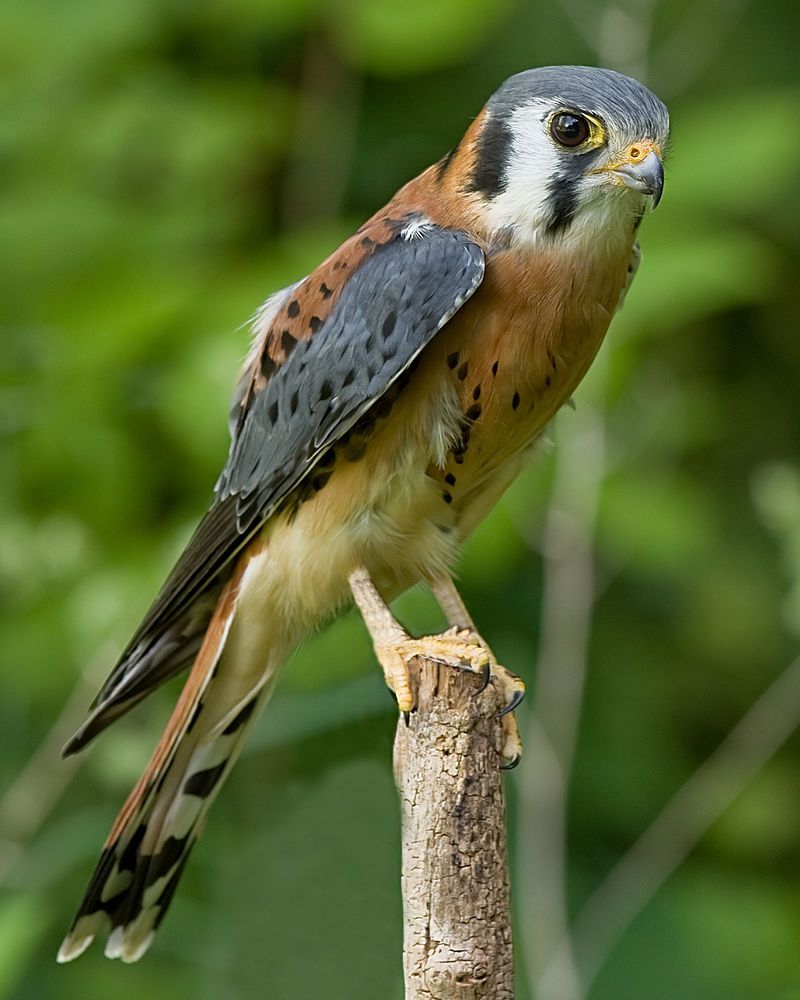
| Kingdom | Animalia |
| Phylum | Chordata |
| Class | Aves |
| Order | Falconiformes |
| Family | Falconidae |
| Genus | Falco |
| Species | F. sparverius |
8. Swainson’s Hawk (Buteo swainsoni)
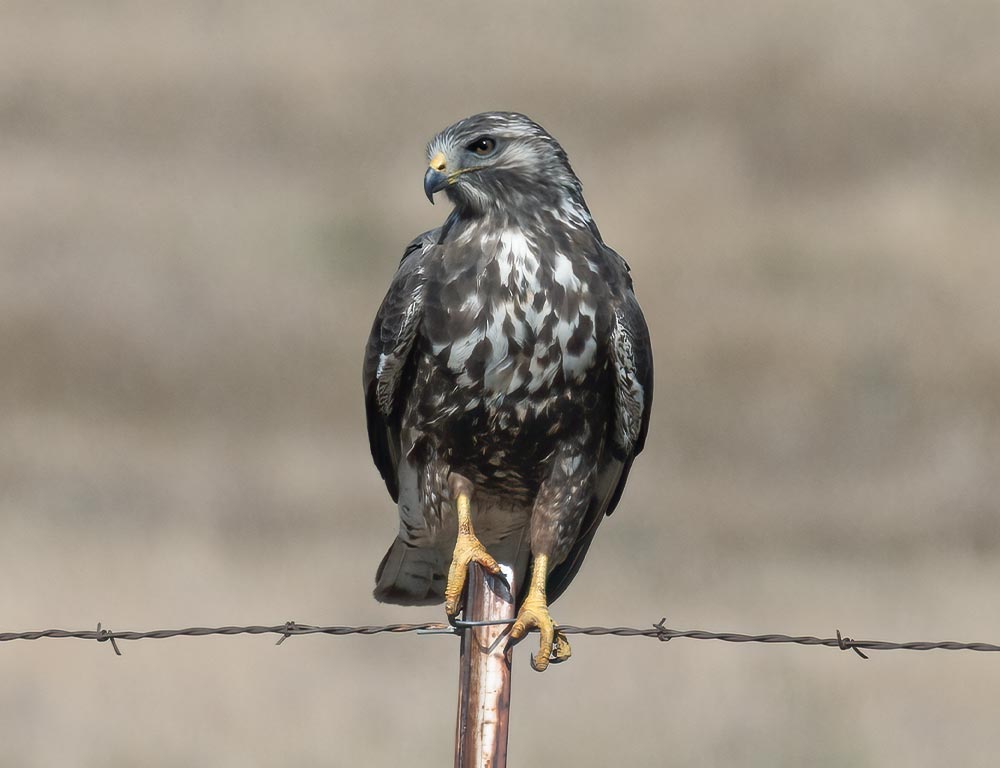
Swainson’s Hawk, scientifically known as Buteo swainsoni, is a magnificent raptor that migrates long distances across the Americas. These hawks have a wingspan ranging from 45 to 54 inches and 18 to 22 inches long.
They display a varied plumage with light and dark morphs, and their distinctive features include a white chin and throat with a dark “bib.” Swainson’s Hawks are skilled hunters of small mammals, birds, and insects.
They are known for their soaring flights, often using thermals to travel thousands of miles during their migration from North to South America. During the breeding season, they build nests in trees or on cliffs.
Swainson’s Hawks are celebrated for their conservation success, with their populations rebounding after facing threats from pesticide use.
| Kingdom | Animalia |
| Phylum | Chordata |
| Class | Aves |
| Order | Accipitriformes |
| Family | Accipitridae |
| Genus | Buteo |
| Species | B. swainsoni |
9. Bald Eagle (Haliaeetus leucocephalus)
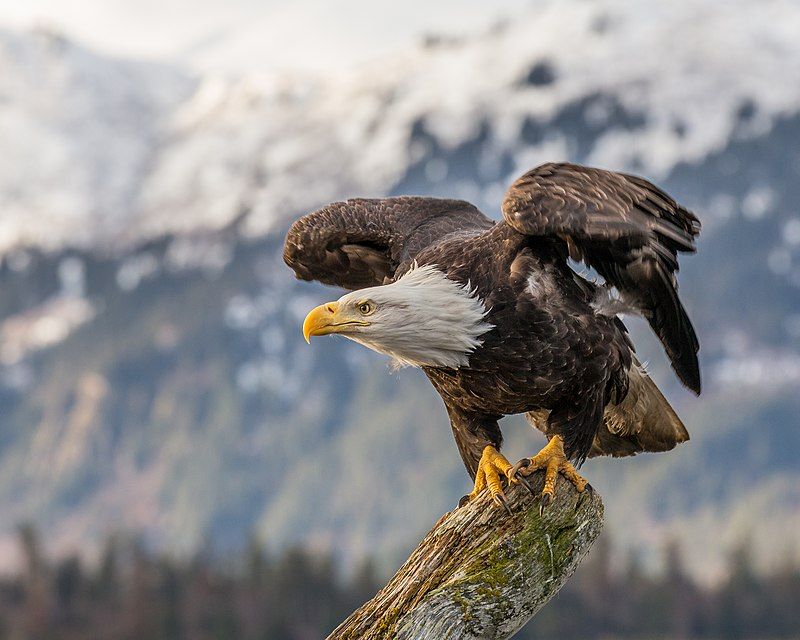
The Bald Eagle, scientifically known as Haliaeetus leucocephalus, is an iconic and majestic bird of prey that serves as the national emblem of the United States.
These eagles have a wingspan that can reach up to 7 feet and 28 to 40 inches long. They are easily recognized by their striking white head and tail, contrasting with their dark brown body.
Bald Eagles are apex predators, primarily feeding on fish, which they catch with their powerful talons. They are known for their impressive hunting prowess and remarkable eyesight.
These birds build large nests, often in tall trees near bodies of water. They are known for their resilience, having remarkably recovered after facing endangerment from hunting and pesticide exposure. Today, they are a symbol of national pride and conservation success.
| Kingdom | Animalia |
| Phylum | Chordata |
| Class | Aves |
| Order | Accipitriformes |
| Family | Accipitridae |
| Genus | Haliaeetus |
| Species | H. leucocephalus |
10. Eastern Screech Owl (Megascops asio)
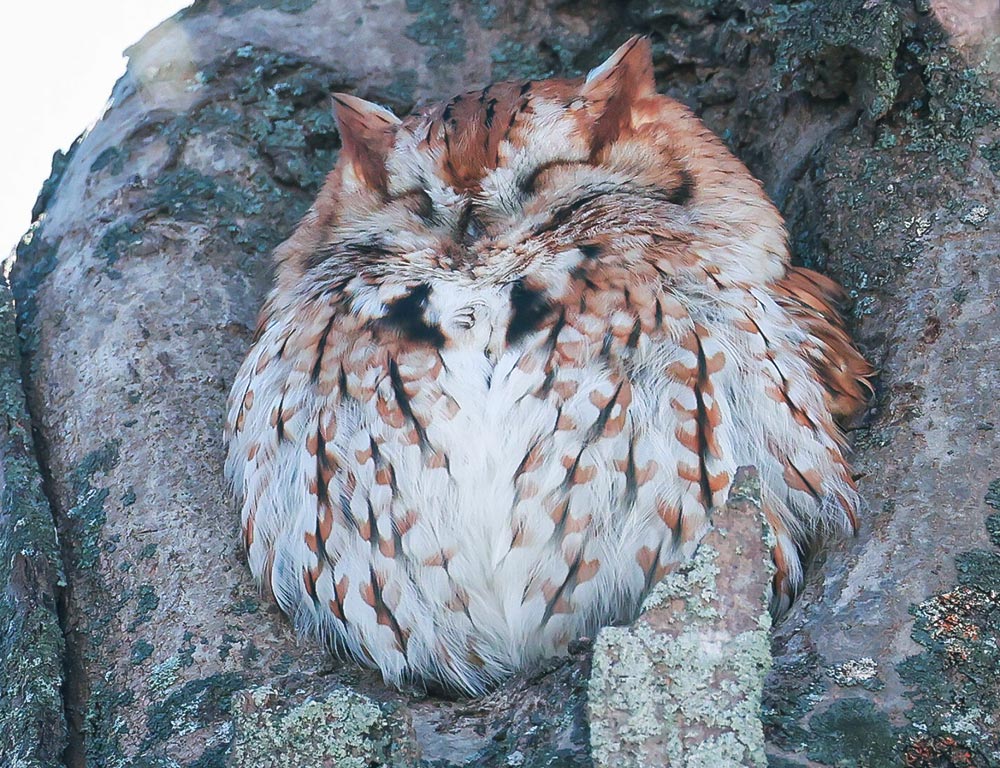
The Eastern Screech Owl, scientifically known as Megascops asio, is a small but captivating owl found in eastern North America. These owls have a wingspan of 18 to 24 inches and a length of 6 to 10 inches.
They are known for their small size and distinctive “ear” tufts on their heads. Eastern Screech Owls come in two color morphs, red and gray, which help them blend into their surroundings.
They are primarily nocturnal hunters, preying on insects, small mammals, and birds. These owls are famous for their haunting and eerie screech-like calls, often heard at night.
They nest in tree cavities or nest boxes and are highly adaptable to urban environments. Their ability to control pest populations makes them valuable inhabitants of their ecosystems.
| Kingdom | Animalia |
| Phylum | Chordata |
| Class | Aves |
| Order | Strigiformes |
| Family | Strigidae |
| Genus | Megascops |
| Species | M. asio |
11. Northern Harrier (Circus hudsonius)
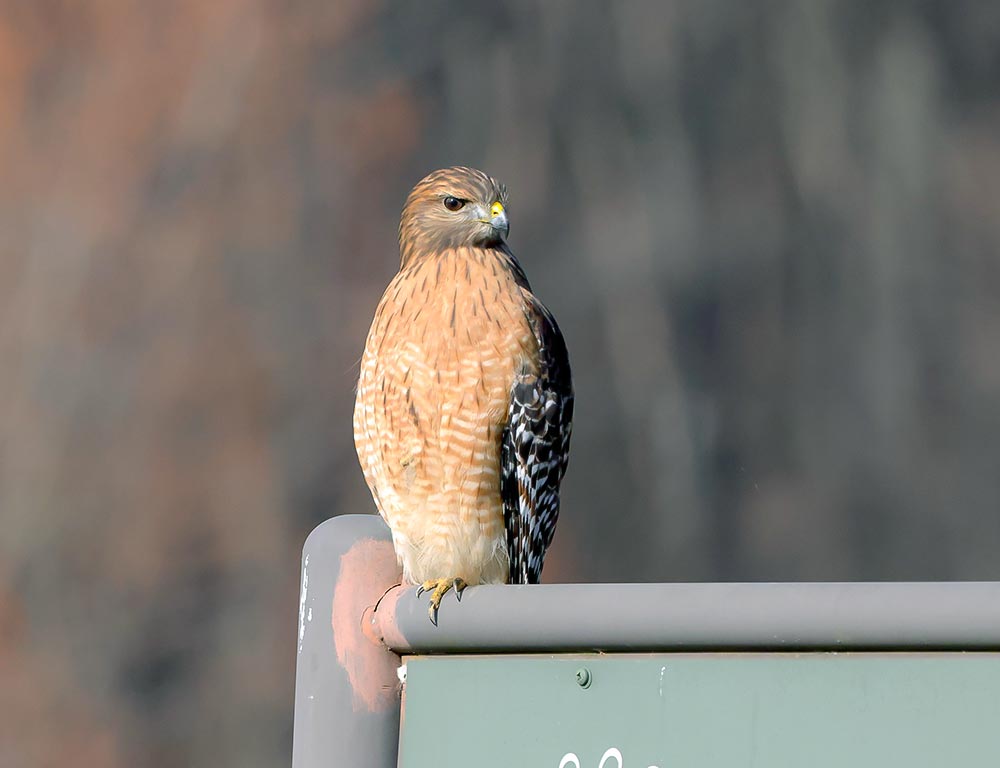
The Northern Harrier, scientifically known as Circus Hudsonius, is a distinctive hawk found in open habitats across North America. These raptors have a wingspan of 38 to 48 inches and 18 to 20 inches long.
They are known for their slender body, long tail, and owl-like facial disk. Northern Harriers are skilled hunters, primarily preying on small mammals, birds, and even some reptiles.
They are renowned for their low, gliding flight while hunting, which allows them to detect prey in grassy fields and marshes. These hawks are sexually dimorphic, with males being pale gray and females displaying brown plumage with streaks.
Northern Harriers build ground nests in open areas and are often seen hovering or quartering over their hunting grounds.
| Kingdom | Animalia |
| Phylum | Chordata |
| Class | Aves |
| Order | Accipitriformes |
| Family | Accipitridae |
| Genus | Circus |
| Species | C. hudsonius |
12. Osprey (Pandion haliaetus)
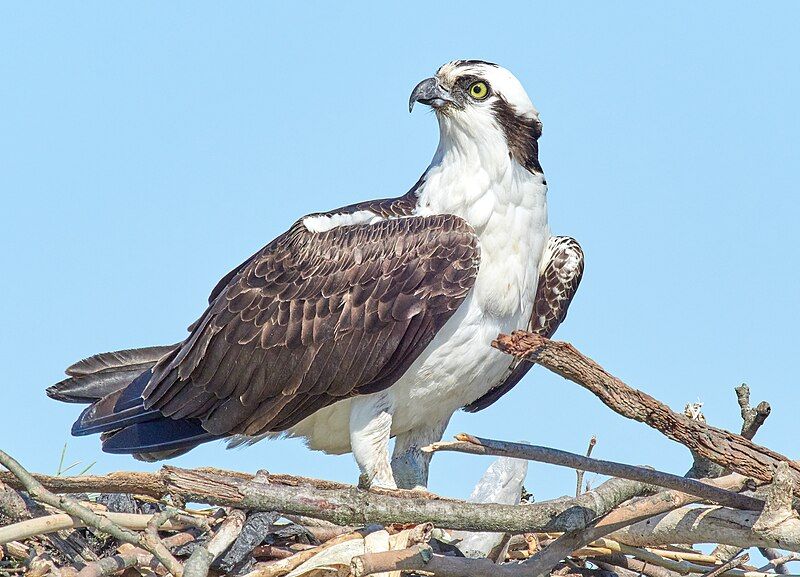
| Kingdom | Animalia |
| Phylum | Chordata |
| Class | Aves |
| Order | Accipitriformes |
| Family | Pandionidae |
| Genus | Pandion |
| Species | P. haliaetus |
13. Golden Eagle (Aquila chrysaetos)
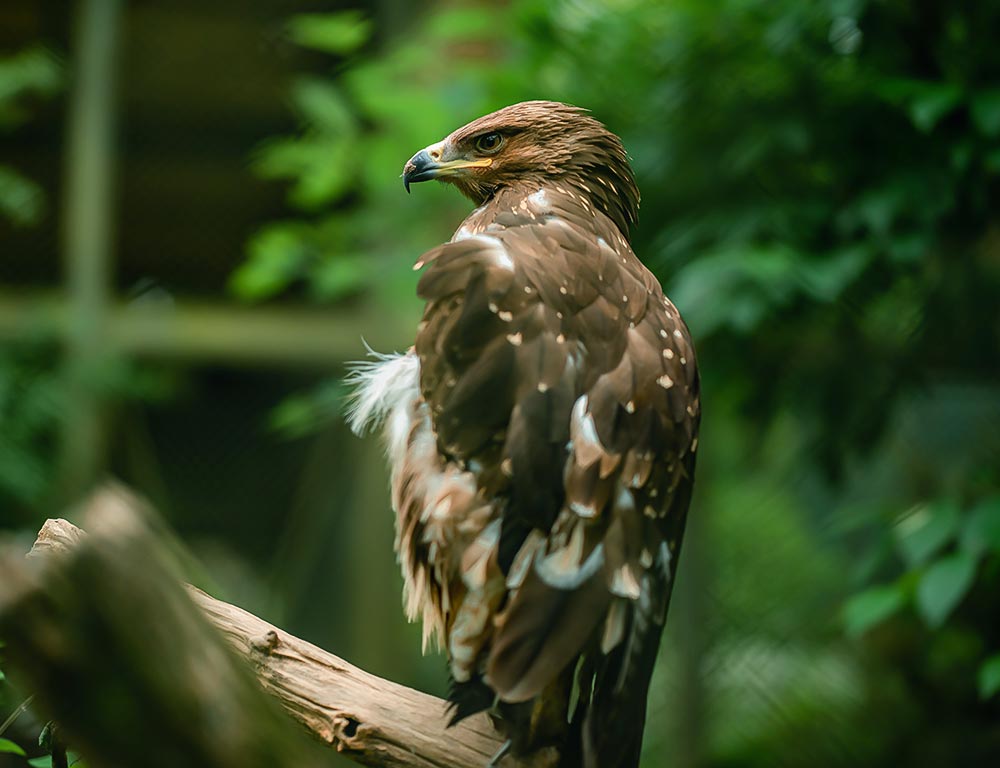
The Golden Eagle, scientifically known as Aquila Chrysaetos, is a majestic and formidable bird of prey that inhabits a wide range of habitats across North America, Europe, and Asia.
These eagles are known for their impressive size, with a wingspan reaching up to 7.5 feet and 28 to 40 inches long. They have dark brown plumage with golden feathers on the nape of their necks, which gives them their name.
Golden Eagles are powerful hunters, preying on various animals, including mammals, birds, and sometimes even large ungulates.
They are renowned for their swift and precise hunting techniques, which often involve high-speed aerial pursuits.
These eagles build large nests in cliffs or on rocky outcrops and are known for their strong territorial behavior. Golden Eagles are symbols of strength and grace in many cultures.
| Kingdom | Animalia |
| Phylum | Chordata |
| Class | Aves |
| Order | Accipitriformes |
| Family | Accipitridae |
| Genus | Aquila |
| Species | A. chrysaetos |
14. Peregrine Falcon (Falco peregrinus)
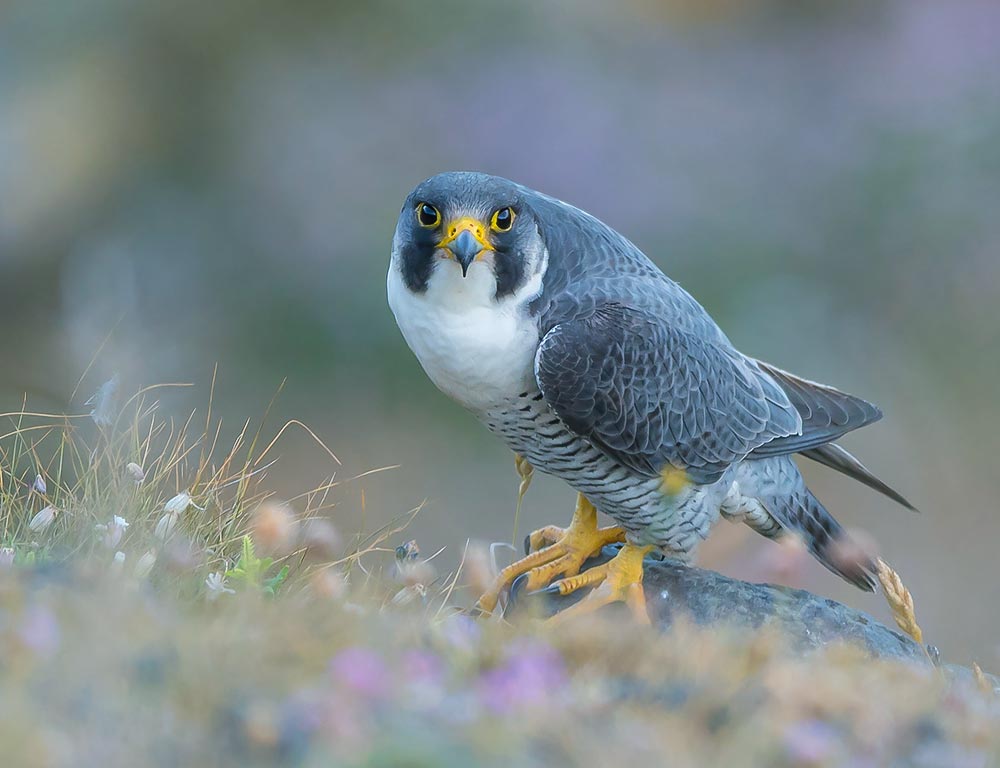
The Peregrine Falcon, scientifically known as Falco peregrinus, is a renowned and globally distributed falcon known for its extraordinary speed and hunting prowess. Peregrine Falcons have a wingspan of 38 to 44 inches and a length of 14 to 20 inches.
They are characterized by their blue-gray plumage and distinctive black markings on their heads. These falcons are the fastest birds in the world, capable of reaching speeds exceeding 240 miles per hour during hunting stoops.
Peregrine Falcons primarily prey on other birds, using their incredible speed and sharp talons to capture their quarry mid-air.
They are known for nesting on cliffs and tall buildings in urban areas, showcasing their adaptability to diverse environments.
Peregrine Falcons have made a remarkable recovery from endangerment due to banning certain pesticides.
| Kingdom | Animalia |
| Phylum | Chordata |
| Class | Aves |
| Order | Falconiformes |
| Family | Falconidae |
| Genus | Falco |
| Species | F. peregrinus |
15. Great Horned Owl (Bubo virginianus)
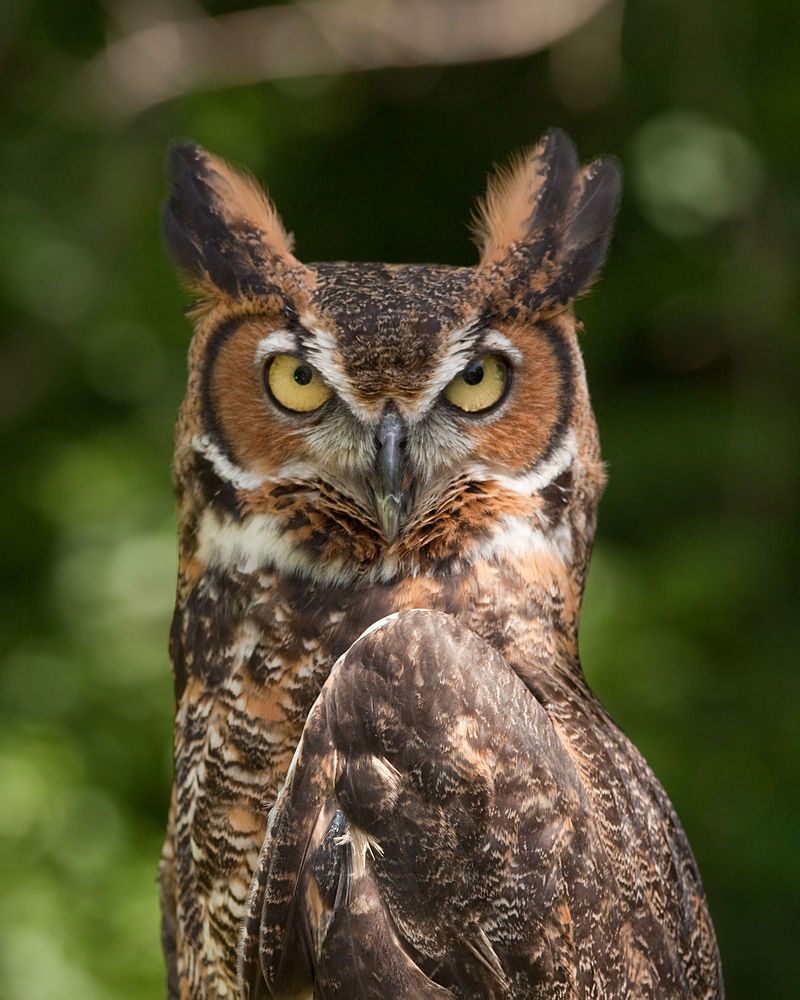
The Great Horned Owl, scientifically known as Bubo virginianus, is a formidable and widespread owl species found throughout the Americas. These owls are known for their large size, with a wingspan of 36 to 60 inches and a length of 18 to 25 inches.
They have distinctive “horns” or ear tufts on their heads, which are actually feather tufts and not their ears. Great Horned Owls have a mottled brown and gray plumage, providing excellent camouflage.
They are skilled nocturnal hunters, preying on various animals, from small mammals to other birds. These owls are known for their deep hooting calls and adaptability to various habitats, including forests, deserts, and urban areas.
They build nests in trees or use old nests of other birds and are considered one of the top predators in their ecosystems.
| Kingdom | Animalia |
| Phylum | Chordata |
| Class | Aves |
| Order | Strigiformes |
| Family | Strigidae |
| Genus | Bubo |
| Species | B. virginianus |
16. Short-eared Owl (Asio flammeus)

The Short-eared Owl, scientifically known as Asio flammeus, is a distinctive and globally distributed owl species. These owls have a wingspan of 33 to 43 inches and a length of 13 to 17 inches.
They are characterized by their short “ear” tufts, which are often invisible. Short-eared Owls have mottled brown plumage with streaks, providing effective camouflage in their grassland habitats.
They are primarily crepuscular and nocturnal hunters, preying on small mammals and birds. These owls are known for their low, buoyant flight and are often seen hunting over open fields and marshes.
Short-eared Owls are social birds, often seen in loose colonies during the breeding season. They nest on the ground, creating shallow depressions, and are a fascinating sight for birdwatchers in their grassland habitats.
| Kingdom | Animalia |
| Phylum | Chordata |
| Class | Aves |
| Order | Strigiformes |
| Family | Strigidae |
| Genus | Asio |
| Species | A. flammeus |
17. Prairie Falcon (Falco mexicanus)
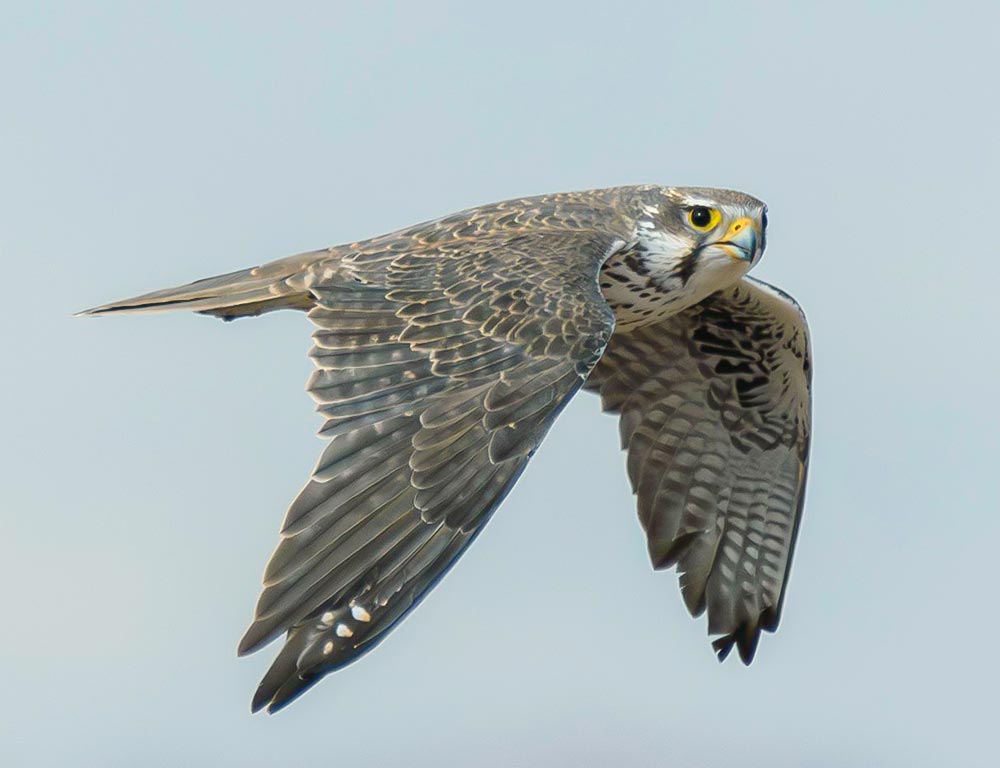
| Kingdom | Animalia |
| Phylum | Chordata |
| Class | Aves |
| Order | Falconiformes |
| Family | Falconidae |
| Genus | Falco |
| Species | F. mexicanus |
18. Snowy Owl (Bubo scandiacus)
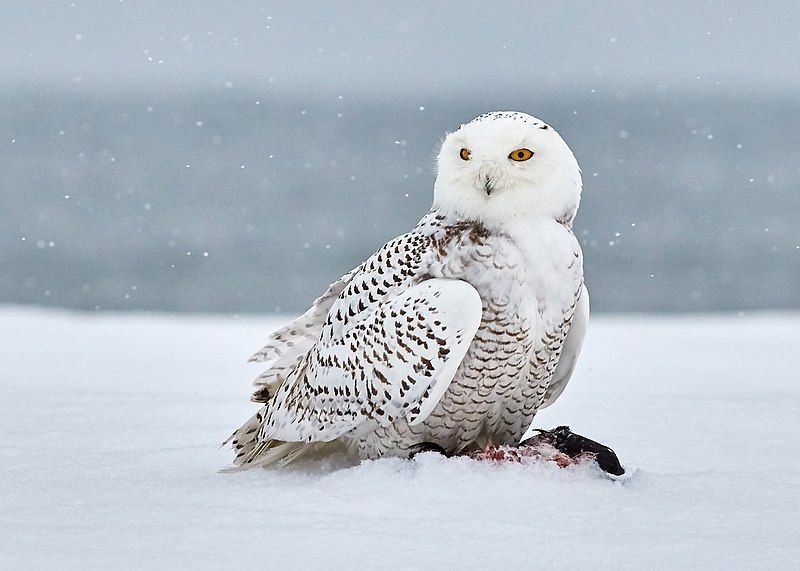
The Snowy Owl, scientifically known as Bubo scandiacus, is a striking and iconic owl species native to the Arctic tundra regions of North America and Eurasia.
These owls are known for their distinctive pure white plumage, which provides excellent camouflage in their snowy habitats. They have a wingspan of 49 to 59 inches and a length of 20 to 28 inches.
Snowy Owls are skilled hunters, primarily preying on small mammals and birds. They are diurnal hunters, often perched on the ground or at elevated points.
Snowy Owls are known for their resilience in harsh winter conditions and are famous for their occasional southern migrations, which can bring them to more temperate regions. They are a symbol of the Arctic wilderness.
| Kingdom | Animalia |
| Phylum | Chordata |
| Class | Aves |
| Order | Strigiformes |
| Family | Strigidae |
| Genus | Bubo |
| Species | B. scandiacus |
19. Burrowing Owl (Athene cunicularia)
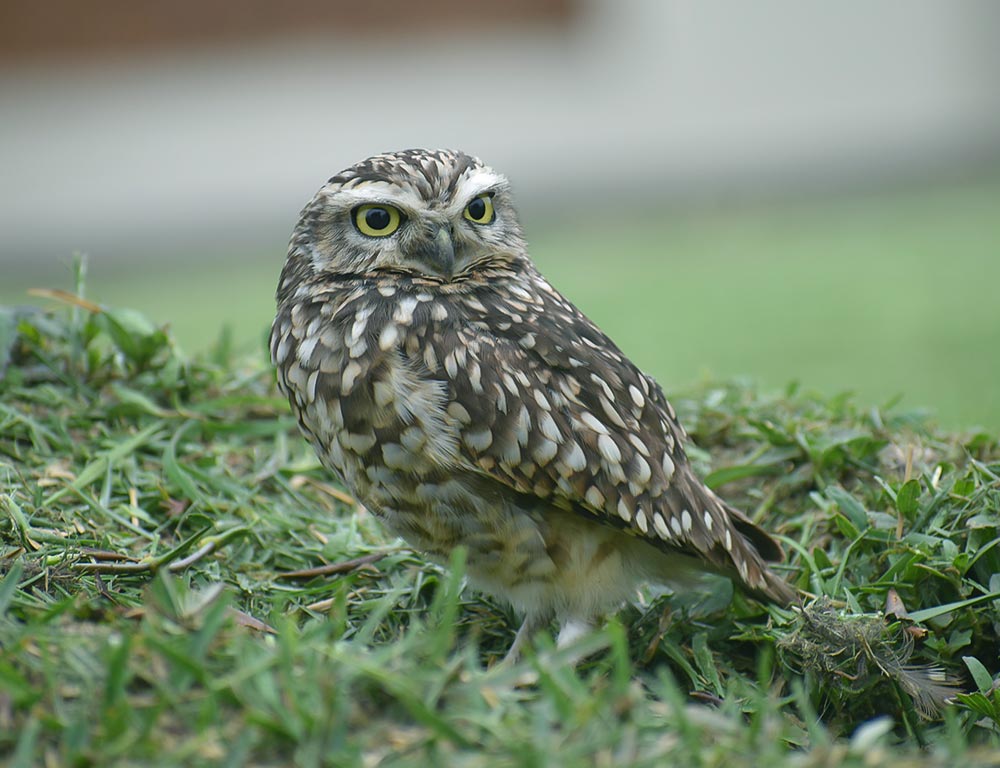
The Burrowing Owl, scientifically known as Athene cunicularia, is a small and unique owl species found in North and South America. These owls have a wingspan of 20 to 24 inches and a length of 7 to 10 inches.
They are characterized by their long legs and habit of nesting in burrows in the ground, often abandoned by other animals. Burrowing Owls are primarily diurnal hunters, preying on insects, small mammals, and reptiles.
They are known for their endearing and comical behavior, including their habit of bobbing their heads. These owls are highly adaptable to both grassland and urban habitats. They are considered a species of conservation concern in some areas due to habitat loss.
| Kingdom | Animalia |
| Phylum | Chordata |
| Class | Aves |
| Order | Strigiformes |
| Family | Strigidae |
| Genus | Athene |
| Species | A. cunicularia |
20. Buteos (Buteo spp.)
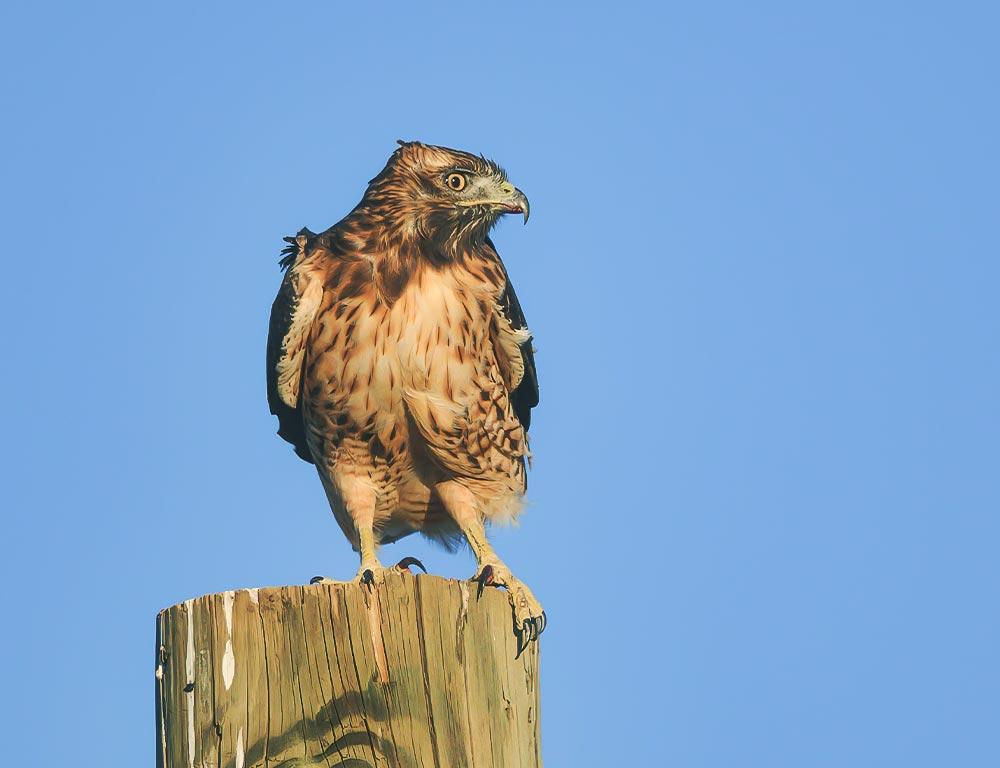
Buteos, belonging to the genus Buteo, are a diverse group of medium to large-sized hawks found across the Americas. They are characterized by their broad wings and short tails, which make them adept at soaring and gliding in open habitats.
Buteos include species such as the Red-tailed Hawk (Buteo jamaicensis) and the Broad-winged Hawk (Buteo platypterus). These hawks primarily feed on small mammals, birds, and reptiles and play an essential role as their ecosystems’ top predators.
Buteos are known for their soaring flight patterns, commonly seen in rural and suburban areas. They are celebrated for their adaptability and their importance in maintaining ecological balance.
| Kingdom | Animalia |
| Phylum | Chordata |
| Class | Aves |
| Order | Accipitriformes |
| Family | Accipitridae |
| Genus | Buteo |
21. Turkey Vulture (Cathartes aura)

The Turkey Vulture, scientifically known as Cathartes aura, is a unique and distinctive vulture species found throughout the Americas. These vultures have a wingspan of 63 to 72 inches and a length of 25 to 32 inches.
They are characterized by their bald red head and dark plumage. Turkey Vultures are scavengers, primarily feeding on carrion.
They have an extraordinary sense of smell, allowing them to locate decaying carcasses high in the sky. They often soar in thermals, using their wings to glide effortlessly.
Turkey Vultures are crucial in cleaning up the environment by consuming dead animals. Despite their unappealing feeding habits, they are valuable members of their ecosystems.
| Kingdom | Animalia |
| Phylum | Chordata |
| Class | Aves |
| Order | Accipitriformes |
| Family | Cathartidae |
| Genus | Cathartes |
| Species | C. aura |
22. Accipitridae (Accipitrids)
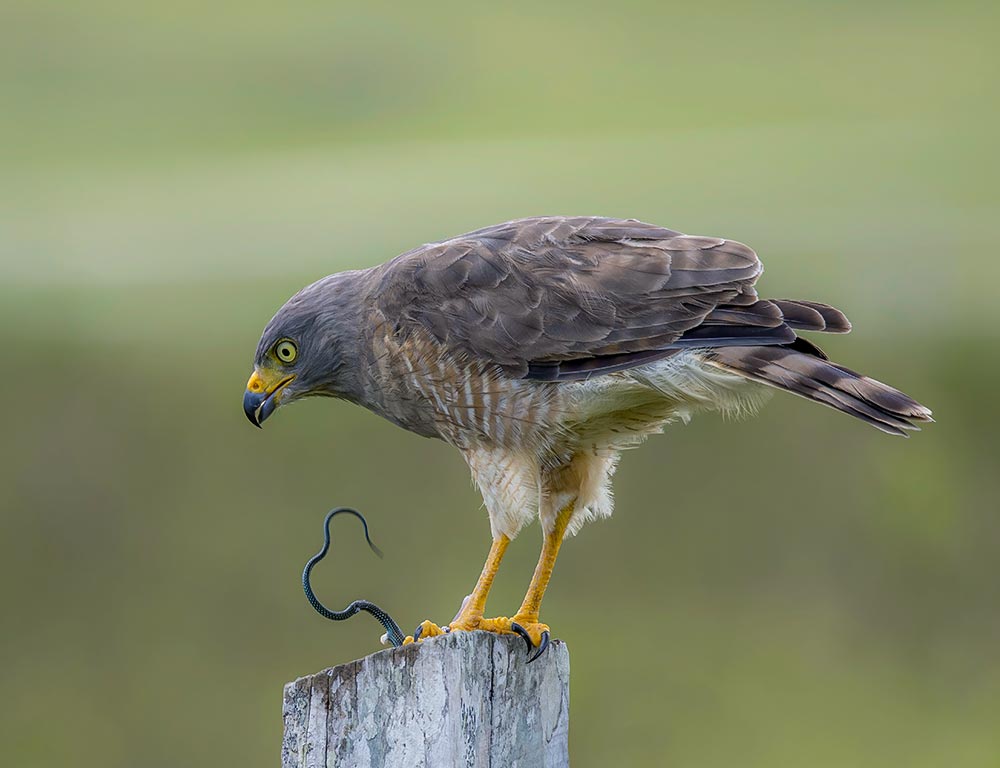
| Kingdom | Animalia |
| Phylum | Chordata |
| Class | Aves |
| Order | Accipitriformes |
| Family | Accipitridae |
Conclusion
Birds of prey play a vital role in Iowa’s ecosystem as top predators, maintaining the balance of the food chain and contributing to the environment’s overall health.
Their presence is a testament to the diverse wildlife in the state and a symbol of successful conservation efforts.
Efforts to protect and preserve their habitats, control pesticide use, and reduce human interference have resulted in the recovery of several birds of prey species in Iowa, such as the Bald Eagle and Peregrine Falcon.
However, further conservation measures must be taken to ensure the long-term survival of these magnificent creatures. Public education and awareness campaigns are necessary to promote the importance of birds of prey and inspire action towards their preservation.
By valuing and protecting these remarkable birds, we can secure a sustainable future for Iowa’s wildlife and maintain the beauty of its natural landscape.